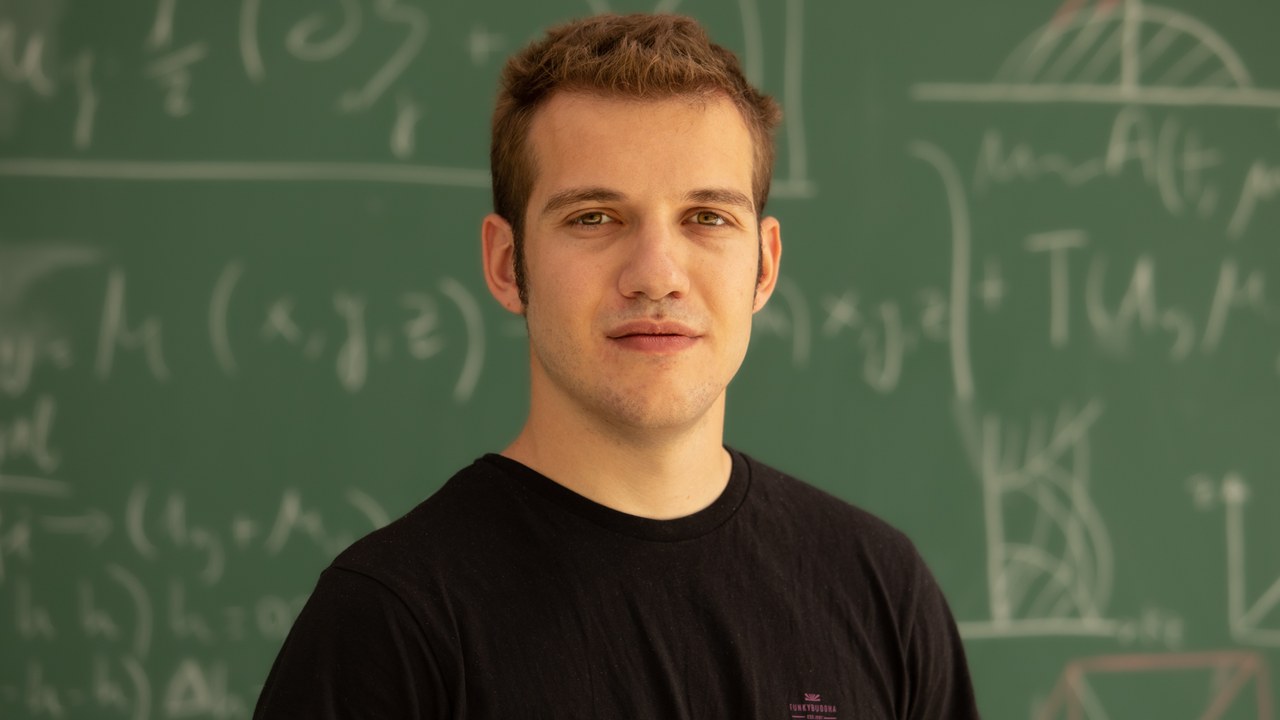The disruption of stars from massive black holes in a cosmological context
PhD Program
- Speaker
-
Markos Polkas
- When
-
2025/12/03
14:00 - Place
- CFM Auditorium, Donostia / San Sebastián
- Add to calendar
-
iCal

PhD Thesis defense by Markos Polkas
Supervisor: Silvia Bonoli (DIPC, Ikerbasque)
Astrophysics, Galaxy-formation, Supermassive Black Holes
It is not uncommon, even among young children, to ask: “What happens when you fall into a black hole?” While we cannot perform experiments near real black holes, we know they reside in galaxies filled with stars. This naturally leads to a more realistic version of the question: What happens to stars when they “fall” into a black hole? How often does this occur, and how often can we witness such an event? The final question—and the consequences of its answer, which are relevant to our broader understanding of massive black holes—lies at the core of this thesis.
The answer turns out to be complex. Typically, a star does not fall directly into a massive black hole (MBH), unless the black hole is supermassive. Instead, it is tidally disrupted by the MBH’s gravitational field, producing a luminous flare known as a tidal disruption event (TDE). The first part of this work investigates the demographics of TDEs by modeling the coevolution of MBHs and their galactic environments in a cosmological context. I use a semi-analytic galaxy formation model, which tracks the evolution of both galaxies and MBHs, including various scenarios for black hole seeding, growth, spin evolution, and binary dynamics. TDE rates are assigned to each MBH as a function of the evolving stellar environment, based on solving the 1D Fokker–Planck equation.
In the first part of the thesis, I present the model predictions of volumetric TDE rates that align with recent optical and earlier X-ray observations. This agreement requires a high occupation fraction of MBHs in nuclear star clusters. These clusters host the majority of TDEs for the entire MBH mass range. I find that volumetric TDE rates increase with MBH mass, peak at a few million solar masses, and decline at higher masses. Overall, the predicted TDE volumetric rates remain roughly constant with redshift. I discuss how observed TDE rates can constrain the MBH spin distribution and assess the average contribution of TDEs to MBH growth. For the nuclear star clusters of low-mass galaxies in the Local Universe, the stars in orbits capable of producing TDEs are already disrupted. This naturally explains the scarcity of TDE-hosts of low-mass galaxies in observations and underscores the importance of time-dependent TDE modeling.
In the second part of the thesis, I explore the theoretical contribution of TDEs to the mass growth of intermediate-mass MBHs. Emerging samples from transient surveys offer promising constraints on this previously unexplored growth channel. I find that massive black holes do not grow more than thirty thousand solar masses through TDEs. The third part extends the study beyond black hole mass, focusing on TDEs’ role in angular momentum transfer. I investigate how TDEs affect MBH spin evolution under standard assumptions. Moreover, I explore whether elevated TDE rates can influence the gas content of their host galaxies through galactic-scale feedback processes, an idea of great interest for the theoretical understanding of small galaxies. These studies show that TDEs, although popular and energetic, cannot be the driving mechanism in processes in a cosmological context. Our findings pave the way for further investigation.
Finally, I return to the core question: What happens when a star falls toward a massive black hole? In the context of the current paradigm involving stream–stream collisions and accretion disk formation, I investigate what happens when the returning stream of disrupted stellar material interacts with an existing accretion disk near the black hole. After analytically estimating the disruption timescale, I run 2D and 3D hydrodynamical simulations of a cloud or a stream emerging in a supersonic wind. From these simulations, I derive the mixing timescale of the steam in the disk. With a semi-analytic approach, I show that streams can be disrupted if accretion disks form early, as predicted by some simulations, possibly leading to intermittent feeding and
eruptions.
